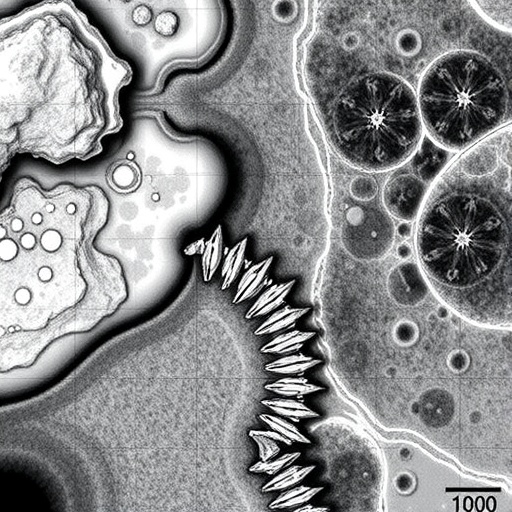
In a groundbreaking advancement within pediatric cardiovascular medicine, researchers have unveiled a novel predictive model that promises to revolutionize the management of postural orthostatic tachycardia syndrome (POTS) in children. This enigmatic condition, characterized by an excessive heart rate increase upon standing, has long challenged clinicians due to its complex and heterogeneous nature. Published in the esteemed World Journal of Pediatrics, the study introduces a robust nomogram and scoring system leveraging three vital physiological parameters—body mass index (BMI) z-score, serum chlorine concentration, and urine specific gravity—to anticipate the effectiveness of oral rehydration solution (ORS) therapy in pediatric POTS patients.
Pediatric POTS, often overshadowed by its adult counterpart, significantly impairs quality of life through symptoms such as dizziness, palpitations, fatigue, and syncope. Traditional therapeutic approaches have relied heavily on symptomatic treatment and empirical interventions, including volume expansion strategies like ORS administration. However, clinicians have grappling with unpredictable therapeutic outcomes, making it crucial to identify reliable predictors of ORS efficacy to tailor individualized treatment regimens and circumvent unnecessary interventions.
The research team led by Gao, YM., Xu, BW., and Liu, P., embarked on an extensive clinical investigation to dissect the intricate physiological markers influencing hydration therapy success in pediatric POTS. Their work systematically collated and analyzed patient demographics, biochemical indices, and urinary markers from a diverse pediatric cohort presenting with POTS. Central to this endeavor was the utilization of refined statistical modeling techniques culminating in a user-friendly nomogram—a visually intuitive tool designed to integrate multiple variables into a single predictive framework.
.adsslot_bXd0z5cZYA{width:728px !important;height:90px !important;}
@media(max-width:1199px){ .adsslot_bXd0z5cZYA{width:468px !important;height:60px !important;}
}
@media(max-width:767px){ .adsslot_bXd0z5cZYA{width:320px !important;height:50px !important;}
}
ADVERTISEMENT
What sets this study apart is its innovative selection of predictive biomarkers. The BMI z-score, representing standardized body mass index adjusted for age and sex, anchors the model by reflecting the child’s nutritional and physiological status, which profoundly impacts fluid distribution and cardiovascular responsiveness. Likewise, serum chlorine levels serve as a proxy for electrolyte balance and acid-base homeostasis, essential components modulating autonomic nervous system function and vascular tone. Urine specific gravity, a direct measure of renal concentrating ability and hydration status, further enriches the model by offering real-time insight into fluid homeostasis and renal response to volume changes.
Through rigorous multivariate analyses, the researchers identified that these three parameters in combination hold significant prognostic value, outperforming single-factor predictions. The nomogram, augmented with a corresponding scoring system, empowers clinicians to compute individualized probabilities of favorable ORS response, effectively stratifying patients into distinct therapeutic pathways. This represents a pivotal leap toward precision medicine in pediatric autonomic disorders, marrying clinical practicality with statistical rigor.
Moreover, the research elucidates critical pathophysiological underpinnings linking fluid volume status and electrolyte disturbances with the autonomic dysregulation observed in POTS. The interplay between diminished effective circulatory volume and aberrant neurohormonal responses manifests in the characteristic postural tachycardia. By quantifying markers like serum chlorine, the study sheds light on the potential contributory role of electrolyte imbalances in exacerbating or alleviating symptoms, hinting at future avenues for targeted therapeutic interventions beyond mere volume repletion.
Importantly, the use of BMI z-score as a foundational biometric parameter acknowledges the heterogeneity of pediatric patients, accounting for variations in growth trajectories and baseline physiological reserves. This nuanced approach contrasts with one-size-fits-all strategies, promoting equity in treatment consideration across age and developmental stages, which is paramount in pediatric care where maturation profoundly influences disease phenotype and treatment response.
The application of urine specific gravity within the predictive model exemplifies a pragmatic assessment of hydration status, easily obtainable during routine clinical visits without invasive procedures. This attribute significantly enhances the model’s utility in real-world settings, facilitating rapid risk stratification and decision-making without necessitating sophisticated laboratory infrastructure, a critical consideration for widespread clinical adoption.
In clinical practice, implementing this nomogram and scoring model could streamline patient management by identifying children unlikely to benefit from ORS early, prompting exploration of alternative therapies such as pharmacological agents or lifestyle modifications. Conversely, it can reinforce confidence in volume-expansion strategies for those with high predicted response probabilities, optimizing resource allocation and minimizing exposure to unnecessary interventions.
The study’s methodological rigor, encompassing a well-characterized patient cohort, stringent inclusion criteria, and validation of predictive accuracy via receiver operating characteristic analysis, underscores the reliability and reproducibility of findings. Furthermore, this research addresses a pressing gap in pediatric autonomic medicine literature, where standardized prediction tools remain scarce, thereby setting a precedent for future investigations.
Scientifically, this research advances the understanding of biomarker-driven prediction models in neurocardiology, reinforcing the principle that multifactorial conditions like POTS necessitate integrative diagnostic frameworks rather than isolated parameter assessments. The elegant integration of anthropometric, biochemical, and urinary measures encapsulates a multi-system perspective essential for accurate clinical prognostication.
Looking ahead, the researchers advocate for multicenter prospective trials to validate and refine the nomogram, ultimately aiming for incorporation into clinical guidelines. The potential to adapt and expand this model with emerging biomarkers or wearable monitoring data also opens exciting prospects for enhanced remote patient management and telemedicine applications.
Beyond clinical implications, the study contributes to the broader discourse on precision health in pediatrics, exemplifying how tailored interventions based on quantitative risk stratification can maximize therapeutic benefit while minimizing harm. This paradigm aligns with contemporary trends emphasizing individualized patient care supported by robust data analytics.
In conclusion, the introduction of this nomogram and scoring system marks a transformative step in pediatric POTS management, offering a scientifically grounded, user-friendly, and cost-effective tool to predict oral rehydration solution efficacy. Its adoption promises to elevate clinical care standards, reduce trial-and-error treatments, and improve outcomes for countless children grappling with the challenges of postural orthostatic tachycardia.
Subject of Research: Predictive modeling of oral rehydration solution efficacy in pediatric postural orthostatic tachycardia syndrome based on BMI z-score, serum chlorine, and urine specific gravity.
Article Title: Nomogram and scoring models based on BMI z-score, serum chlorine and urine specific gravity levels for predicting oral rehydration solution efficacy in pediatric postural orthostatic tachycardia syndrome.
Article References:
Gao, YM., Xu, BW., Liu, P. et al. Nomogram and scoring models based on BMI z-score, serum chlorine and urine specific gravity levels for predicting oral rehydration solution efficacy in pediatric postural orthostatic tachycardia syndrome. World J Pediatr 21, 406–418 (2025). https://doi.org/10.1007/s12519-025-00898-3
Image Credits: AI Generated
DOI: April 2025
Tags: body mass index and POTScardiovascular medicine in pediatricsclinical research in pediatric healthhydration therapy for childrenindividualized treatment for POTSnomogram for POTS treatment predictionoral rehydration solutions for POTSpediatric POTS managementpredicting treatment success in POTSserum chlorine and POTSunderstanding postural orthostatic tachycardia syndromeurine specific gravity in POTS treatment





